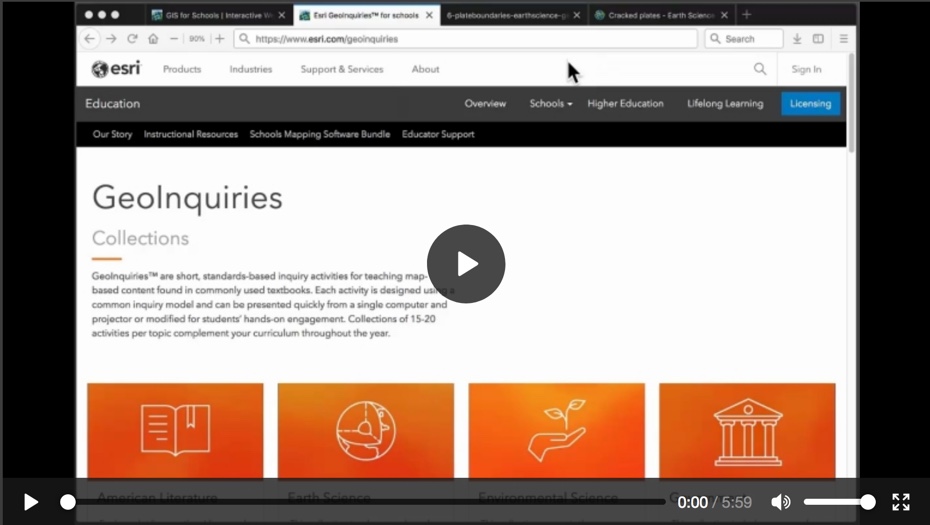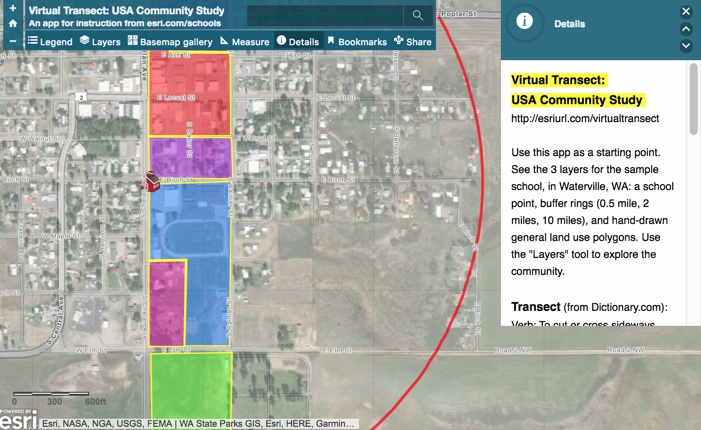We on the Esri education outreach team receive regular inquiries from instructors who want to see examples of the use web maps and applications as instruments for students to communicate the results of their learning and their research. They also want to see maps that at the same time serve as assessment instruments for the instructor to gauge student learning. One of the best examples I have seen lately is the work that Dr Karen R. Lips at the University of Maryland's Department of Biology has been doing. I was even more impressed because this was her first use of story maps, and yet the resulting maps and her approach were extremely innovative! I also liked the fact that in her assessment rubric, she placed weight on the content, but also in the students' effective means of communication. And in her story map instructions, she provided what I thought was just the right amount of information--she didn't bury the students with too much, but gave them enough to get started and become confident, with links for them to keep learning and growing.
I asked Dr Lips to share her work so that the entire GIS education community could benefit, and she has graciously done so, including the attached instructions and rubrics, selected examples that follow, and her instructional reflections below. Selected examples from the students include the life and death of coral reefs, Biodiversity: A Cure for Going Bananas, the Unsung Utility of Oysters, the Path from Monoculture to Sustainability, Of Mice and Men: How Habitat Fragmentation Facilitates the Spread of Lyme Disease, Haiti's environmental chaos, biodiversity and poverty in the nation's capital, Biodiversity Hotspots: Nigeria, and Getting Ticked off by Deforestation.
Dr Lips said, "At the University of Maryland College Park, I teach a non-majors Honors course called Biodiversity Matters, in which we do a variety of readings and activities to show how dependent humans are on biodiversity in every aspect of their lives, from food, to medicine and bioengineering, to clothing and housing, to large scale coastal protection, national security, and international relations. Essentially the course demonstrates the many kinds of goods and services provide by nature (“Natural Capital”) and how those goods and services contribute to human health and well-being. My goal was to show that biodiversity is not a special interest dependent on philanthropy, but should be viewed as the foundation of life on earth that provides sustaining resources to human society. I directly link course topics to the majors of the students to show them how biodiversity intersects their lives and how they have a role in
conserving biodiversity.
The secondary theme of the course is communication. We learn about using the Compass MessageBox to articulate our
message and describe the “So What”, and we compare writing styles of scientific papers to the media coverage of the same studies. We met with a science writer from a major publication to understand the publishing process and how to write for science news, and we compared the differences in the approaches and techniques to science communication in scientific articles, popular articles, and in videos. I designed three major assignments to assess students’ abilities to communicate the importance of biodiversity: (a) in writing through an initial Op-Ed piece, (b) in using visuals and audio by producing an end-of-semester video, and (c) at the midway point, through a combination of writing and visuals with an Esri Story Map. My goals were to demonstrate a continuum of communication styles, show how images can often make a point better than words, and encourage students to think about data visualization.
Developing a Story Map Assignment: This summer I learned that the UMD library has a GIS lab, with full time staff that are available to offer training to faculty and students in the use of ArcGIS. Before the semester began, I met with Dr. Kelly O’Neal and together we identified Story Maps as an easy-to-use platform for students without any GIS experience. This would allow them to make maps, import them into a Story Map, and add images and text to produce an attractive project. I searched the web for examples of how other faculty had used Story Maps in classes, but found few examples (but see https://oceansolutions.stanford.edu/education-and-teaching-resources), and even fewer teaching resources for faculty (i.e., syllabi, lesson plans, project descriptions, grading rubrics). I wrote to Dr. Dawn Wright to see if Esri might
have teaching materials that I had missed. She introduced me to Dr. Joseph Kerski who suggested sharing my resources in a blog post.
Once the semester began I met with students individually to identify topics of interest to them that related to the course theme and which were likely to have available data layers, and introduced them to the Story Map platform. The UMD GIS lab taught ArcGIS basics to my class during a one hour workshop. This was followed by a final one-on-one meeting between each student and the GIS lab staff to identify data that would illustrate their report. I met with students on an as-needed basis while they completed their Story Map.
Assessment: Students really enjoyed this assignment. Students were very creative in their choice of topics and in how they presented data visually. They thought it was a very useful way of producing an illustrated report, and could see how to apply it in some of their other courses. None of them had ever used GIS before, and only a few had ever heard of GIS before they did this assignment. They thought that it was relatively easy to use and most had no major problems with the system. As the instructor, I thought that this format was much more interesting than the traditional format of a written report, and thought it allowed a much greater immersion into the topic. I encouraged several students to submit their Story Map to the annual student competition. I think that with additional time working with ArcGIS, and learning how to import and manipulate data students of any background or in any major could produce high quality Story Map projects.
Resources: I include the Lesson Plan with Instructions for the assignment. I incorporated some of the introductory material from information found on the Stanford website (see above), but the majority of instructions are adapted from previous assignments in my earlier Honors Courses. My grading rubric is based on the text of the instructions, and language adopted from various online grading rubrics. A huge thanks to Dr. Kelly O’Neal and her staff at UMD Libraries
for their assistance and guidance – I definitely plan to do this again in my other classes.

